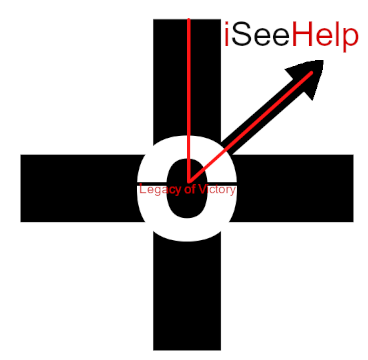4 Ways to View Humpty Dumpty
Folly that fails to show cracks before a fall

Folly that fails to show cracks before a fall
There are at least 4 interpretations of the Humpty Dumpty nursery rhyme since this British ditty appeared in the first 1870 publication of Mother Goose’s Nursery Rhymes. He is pictured as a fragile egg that falls, cracks open, and cannot be fixed.
1 Identified as King Richard III
Oral history may contain previous versions. One theory originated centuries before.
There are other theories around the meaning of ‘Humpty Dumpty’. Some historians believe Humpty Dumpty was simply a device for a riddle around breakable things.
Others have suggested that Humpty Dumpty is King Richard III of England, who is supposed to have been humpbacked and who was defeated at the Battle of Bosworth Field in 1485.
We could assume Humpty Dumpty is the King, the wall is his reign and fight to preserve power, the fall is his defeat, and ‘All the king’s horses and all the king’s men’ the army that failed to prevail. -Classic fm
Several million viewers on TikTok seem to adhere to this theory and also note that he suffered a cruel death at the hands of his enemies and suffered irreparable harm. Shakespeare also wrote about King Richard III with the famous lines, “A horse! A horse! My kingdom for a horse!” The pride of power hungry rulers who use manipulation and deceit brings them to folly and a fall that they can never recover from again.
2 Compared to heavy objects on walls
Other references are to objects and not historical rulers. They could not get this heavy machinery lifted to the top of a tower.
Another theory is that Humpty is actually a cannon. During the English Civil War, history says, a one-eyed gunner named Thompson managed to get a cannon — colloquially called ‘Humpty Dumpty’, to the top of the tower of St Mary at the Walls church and wreak untold destruction on the forces below, before return cannon fire dislodged the pair of them. Hence “had a great fall”.
Boomerang! Being high up causes a great fall because the distance is increased and the effect on others is significant.
3 Revealed in literary figures
Besides being in a Broadway play from 1868–1869, Humpty Dumpty has appeared in books. Words have meaning and the dialogue that ensues between Alice and Humpty Dumpty helps to identify why he is portrayed as a fragile egg who is intentionally confusing her with his words.
As a character and literary allusion, Humpty Dumpty has appeared or been referred to in many works of literature and popular culture, particularly English author Lewis Carroll’s 1871 book Through the Looking-Glass, in which he was described as an egg. Humpty Dumpty appears in Lewis Carroll’s Through the Looking-Glass (1871), a sequel to Alice in Wonderland from six years prior. Alice remarks that Humpty is “exactly like an egg,” which Humpty finds to be “very provoking.” Alice clarifies that she said he looks like an egg, not that he is one. They discuss semantics and pragmatics when Humpty Dumpty says, “My name means the shape I am,” and later:
“I don’t know what you mean by ‘glory,’ “ Alice said.
Humpty Dumpty smiled contemptuously. “Of course you don’t — till I tell you. I meant ‘there’s a nice knock-down argument for you!’”
“But ‘glory’ doesn’t mean ‘a nice knock-down argument’,” Alice objected.
“When I use a word,” Humpty Dumpty said, in rather a scornful tone, “it means just what I choose it to mean — neither more nor less.”
“The question is,” said Alice, “whether you can make words mean so many different things.”
“The question is,” said Humpty Dumpty, “which is to be master — that’s all.”
Alice was too much puzzled to say anything, so after a minute Humpty Dumpty began again. “They’ve a temper, some of them — particularly verbs, they’re the proudest — adjectives you can do anything with, but not verbs — however, I can manage the whole lot! Impenetrability! That’s what I say!”
Looking so smart using words and defining your own meaning backfires when reality leads to Humpty Dumpty arrogance of assumed impenetrability. Absolute power corrupts absolutely when humility is absent.
4 Demonstrated the law of thermodynamics
Further references to Humpty Dumpty reveal scientific terms as he illustrates entropy.
Humpty Dumpty has been used to demonstrate the second law of thermodynamics. The law describes a process known as entropy, a measure of the number of specific ways in which a system may be arranged, often taken to be a measure of “disorder”. The higher the entropy, the higher the disorder. After his fall and subsequent shattering, the inability to put him together again is representative of this principle, as it would be highly unlikely (though not impossible) to return him to his earlier state of lower entropy, as the entropy of an isolated system never decreases.
Increases in disorder and chaos prevent return to the way it was. Until there is an intervention, systems get worse.
4 ways to be wise
The words are easy to recall and apply. Maybe you heard the Humpty Dumpty nursery rhyme as a child. Maybe you still remember the words. Those few lines, with just a few words, reveal more than a cracked egg that cannot be glued back together. The folly of fools portray the life of King Richard III many centuries ago in Britain. Heavy cannons on walls crash to the ground. Books and plays on Broadway, even up to our century with All the President’s Men show that history repeats itself. Scientific laws of thermodynamics reveal immovable realities of principles throughout history. No one escapes pride.
All references to Humpty Dumpty represent proud lies and deception causing people painful consequences.

